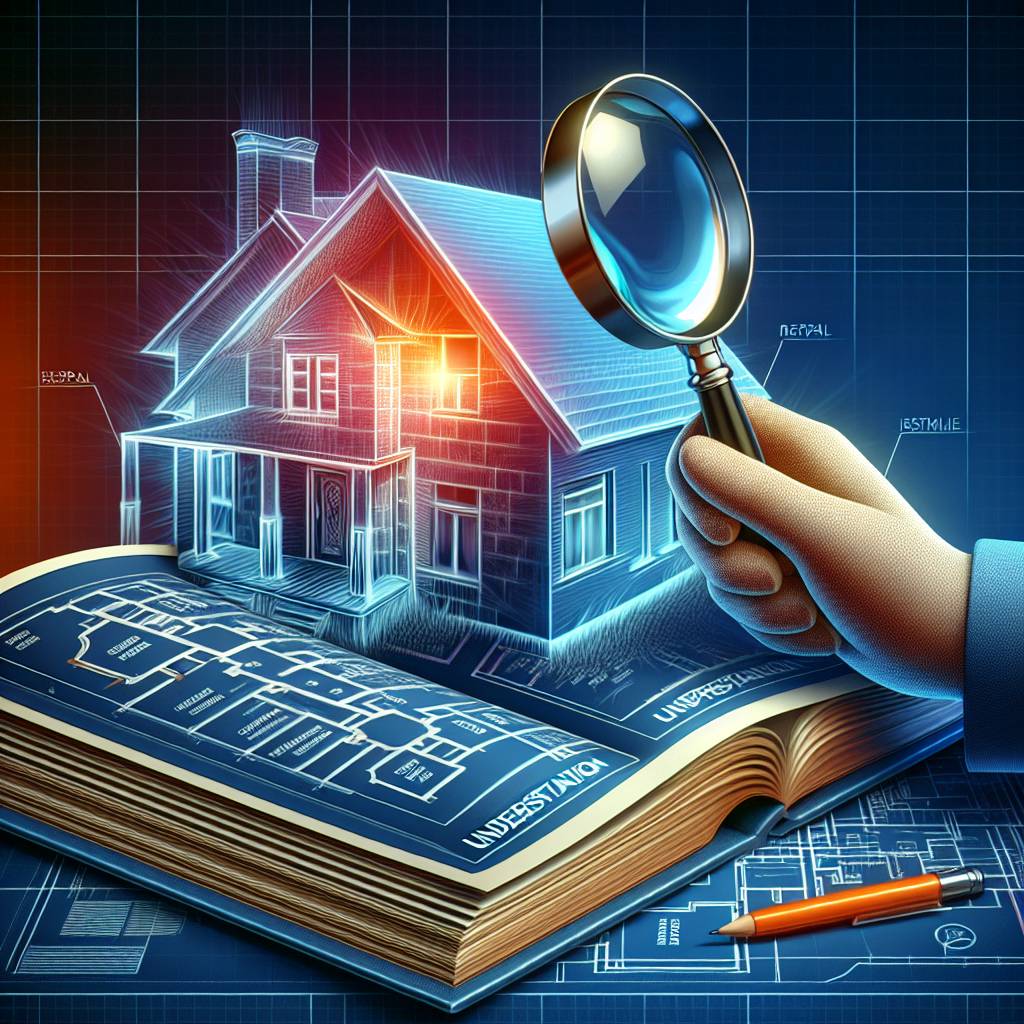Ever wondered what all those technical terms and jargon in your home inspection report really mean? It’s like deciphering a secret code, right? Don’t worry; we’ve got you covered. Whether it’s “HVAC” or “flashing,” we’ll break down these terms into plain English so that you can confidently navigate through your report without feeling lost.
Understanding your home inspection report is crucial for making informed decisions about your property. From identifying potential issues to estimating repair costs, a comprehensive grasp of the report empowers you as a homeowner. So, let’s dive in and unravel the mysteries of home inspections together!
Key Takeaways
- Understanding the home inspection report structure is crucial for identifying potential issues and making informed decisions about a property.
- Look out for red flags in inspection reports such as structural concerns, water damage, or electrical issues, and consider seeking professional opinions for further evaluation.
- Decoding the technical jargon in the report can provide valuable insights into the condition of the property and help in prioritizing necessary repairs or maintenance.
- Be aware of the exclusions in the report, which may include areas not inspected or limitations of the inspection, to avoid overlooking important aspects of the property.
- Recognize the importance of being present during the inspection to gain firsthand knowledge of the property’s condition and to ask questions directly to the inspector.
- Prioritize preparing for negotiations based on the findings of the inspection report and consider seeking guidance from real estate professionals for effective negotiation strategies.
Overview of Home Inspections
Inspection Process
A home inspection is a thorough assessment of a property’s condition. The process typically involves a step-by-step examination of various areas within the home. During a typical home inspection, several key areas are covered, including the structural integrity, electrical systems, plumbing systems, HVAC systems, and more. This comprehensive evaluation aims to identify any existing issues or potential problems that may require attention.
The duration of a standard home inspection can vary depending on factors such as the size and age of the property. However, most inspections generally last between two to three hours for an average-sized home. Larger or older properties, such as home, may require additional time for a more in-depth assessment.
Systems Assessment
Inspectors examine outlets, switches, wiring, and circuit breakers to ensure they are functioning properly and meet safety standards. For home plumbing systems, inspectors check for leaks, water pressure issues, proper drainage, and functionality of fixtures such as sinks and toilets. Additionally,HVAC system assessments involve evaluating heating and cooling equipment to ensure they are operational and well-maintained.
During these home assessments, inspectors thoroughly examine each system component to identify any deficiencies or signs of wear that could indicate potential problems in the future.
Components Check
Inspecting home roofing components involves examining the condition of shingles or other roofing materials for signs of damage or deterioration. Structural components such as walls,floors,and ceilingsare assessedfor stabilityand integrity.Insulationand ventilation componentsare also evaluatedto determine their effectivenessin maintaining energy efficiencywithinthe homeduringextreme temperatures.
Understanding the Report Structure
General Information
The home inspection report includes general information about the property, such as its address, the client’s name, and the date of inspection. This information provides context for specific findings mentioned in the report. For example, knowing when the home inspection took place can help understand seasonal issues like frozen pipes or air conditioning problems.
General information may include details about the weather conditions during the inspection. If there was heavy rain on that day, it could have affected certain areas of the property and might explain some of the findings in the report. Such contextual details are crucial for a comprehensive understanding of potential issues.
- Address
- Client’s name
- Date of inspection
Condition Ratings
Understanding condition ratings is vital for interpreting a home inspection report effectively. Different condition ratings indicate various states of components within a property and home. For instance, a component with an “excellent” rating requires no immediate attention or repair work, while one rated as “poor” demands urgent action to rectify any existing issues.
Interpreting these condition ratings allows homeowners to prioritize repairs or maintenance tasks based on their urgency and severity across different parts of their property. By comprehending these home ratings thoroughly, individuals can make informed decisions regarding which areas need immediate attention and which ones can be addressed at a later time.
- Levels: Excellent, Good, Fair, Poor
- Implications: Urgency and severity
- Various components’ condition ratings
Problem Summaries
Identifying problem summaries within a home inspection report is critical for addressing potential issues promptly. These summaries typically provide an overview of significant concerns found during inspections along with recommendations for further action.
It is important to pay close attention to problem summaries as they highlight key areas that require immediate attention or further evaluation by professionals. Ignoring these problem areas in your home could lead to more extensive damage over time if left unattended.
For instance:
- A problem summary highlighting water damage in the basement might necessitate contacting a waterproofing specialist.
- An electrical issue flagged in this section would warrant hiring an electrician promptly.
- A roof leak mentioned here would require consultation with a roofing expert without delay.
Red Flags in Inspection Reports
Major Concerns
When reviewing a home inspection report, it’s crucial to be able to recognize major concerns that could significantly impact the property’s value and safety. These might include structural issues, electrical problems, plumbing deficiencies, or home. For instance, if the report highlights a cracked foundation or severe water damage, these are major concerns that can jeopardize the safety of the occupants and affect the property’s value.
Addressing major concerns is vital for ensuring the safety and habitability of the home. It may also have financial implications as addressing such home issues can be costly. Repairs for major concerns often require professional intervention and substantial investment. Depending on whether you’re buying or selling, negotiations regarding who will bear responsibility for these repairs are common.
Safety Issues
Safety issues flagged in an inspection report should never be overlooked as they pose potential risks to home inhabitants if left unresolved. These could range from faulty wiring and inadequate fire exits to mold infestations and asbestos presence. Failure to address these safety hazards not only endangers those living in the house but also puts you at risk of non-compliance with local building codes and regulations.
Ensuring compliance with safety standards is paramount when dealing with identified issues in an inspection report. Ignoring them can lead to legal repercussions while fixing them promptly safeguards everyone involved.
Costly Repairs
Understanding the financial implications of costly repairs outlined in a home inspection report is essential for making informed decisions about purchasing or selling a property. The cost estimates provided by home inspectors give you an idea of how much you might need to invest after acquiring a property or how much your asking price should reflect necessary repairs before listing it on sale.
Negotiating repair responsibilities with sellers or buyers becomes pivotal once costly repairs are identified during an inspection process at home. This negotiation aims at determining who will cover expenses associated with repairing significant defects found within the property.
Decoding the Technical Jargon
Terminology Breakdown
Understanding a home inspection report can be daunting due to the technical jargon used. Terms like “efflorescence,” “flashing,” or “soffit” might leave you scratching your head. But knowing these terms is crucial for making informed decisions about a property. For instance, if an inspector notes “efflorescence” in the home report, it means there’s a white, powdery substance on the walls that could indicate water damage.
To decipher these terms, consider consulting resources such as online glossaries or home inspection books. These resources provide clear and concise definitions of technical terms commonly found in inspection reports. By familiarizing yourself with this terminology, you’ll gain valuable insights into the condition of the property and be better equipped to discuss any issues with your real estate agent or seller.
Understanding these technical terms empowers you during negotiations. If you’re aware of specific problems highlighted in the home report, you can address them with confidence and request necessary repairs before finalizing the purchase.
Symbol Interpretation
In addition to technical language, home inspection reports often use symbols and icons to convey information about different aspects of a property’s condition. These symbols may represent anything from minor cosmetic issues to major structural concerns.
For example:
- A green checkmark might denote items that are in good condition.
- A yellow triangle could signify areas requiring future attention.
- A red exclamation mark may indicate significant problems needing immediate resolution.
By understanding what each symbol represents, you can quickly assess which areas need your attention when reviewing an inspection report. This knowledge helps streamline discussions with relevant parties involved in buying or selling a property.
Moreover, comprehending symbol meanings enables you to grasp the severity of identified issues at a glance without delving into lengthy paragraphs within the report itself. This quick reference capability proves invaluable when evaluating multiple properties or discussing findings with professionals involved in real estate transactions.
Exclusions in Reports
Non-inspected Items
When understanding the home inspection report, it’s crucial to grasp what isn’t included in the assessment. Non-inspected items typically encompass aspects like swimming pools, septic systems, and even environmental hazards. These exclusions are vital for homeowners to recognize as they can affect the property’s overall condition.
Understanding reasons for non-inspection is essential. For instance, if a home inspector doesn’t assess a swimming pool due to it being closed during winter, this should be clearly stated in the report. Addressing non-inspected items separately ensures that these critical components aren’t overlooked.
It’s also important to comprehend why certain areas or items were not inspected. If an attic was inaccessible due to excessive storage blocking access panels, this limitation must be outlined in the report so that homeowners know which areas need further attention.
Limitations Explained
Recognizing limitations inherent to home inspections is key to comprehending the assessment’s scope accurately. Factors such as weather conditions or inaccessible areas may impact the thoroughness of an inspection.
Understanding factors that may affect inspection results is crucial for managing expectations effectively. Homebuyers should be aware that inspectors cannot see through walls or predict future issues; they can only evaluate visible and accessible components at a specific point in time.
Managing expectations based on limitations allows homeowners and buyers alike to understand what a home inspection can realistically provide – valuable insight into a property’s current condition rather than absolute guarantees about its future state.
Cost and Timing of Inspections
Inspection Expenses
Home inspections can cost anywhere from $300 to $500 on average, but this can vary based on several factors. The size, age, and location of the property can all influence the overall expense. If you require specialized inspections for things like mold or pests, these will be added costs. It’s crucial to budget for these expenses when planning a real estate transaction.
When considering inspection expenses as part of a real estate deal, it’s important to weigh the potential benefits against the costs involved. While paying for an inspection may seem like an extra financial burden, it could save you money in the long run by identifying issues that might require costly repairs down the line.
- Factors influencing variation in inspection expenses:
- Property size
- Age of property
- Location
- Need for specialized inspections (mold, pests)
Report Turnaround
After completing a home inspection, you’ll typically receive the inspection report within 24 to 48 hours. However, this timeframe can be influenced by various factors such as the inspector’s workload and any additional tests or assessments required.
The turnaround time is essential because it directly impacts your ability to move forward with any necessary actions based on the report findings. For example, if significant issues are identified in the report that affect your decision to purchase a property or negotiate repairs with sellers before closing a deal, having prompt access to this information is critical.
Preparing for Negotiations
Analyzing Report Details
When understanding the home inspection report, it’s crucial to strategize a thorough analysis. Start by carefully reviewing each section of the report. Look for any major issues like structural damage, water leaks, or electrical problems. Identify key details that require immediate attention, such as safety hazards or costly repairs.
Seeking professional guidance can provide valuable insights into the severity of identified issues and their potential impact on the property’s value. A certified home inspector or a trusted contractor can help interpret technical jargon and prioritize necessary repairs.
For instance, if the inspection report highlights an outdated electrical system with potential safety risks, seeking advice from a licensed electrician is essential to understand the extent of required upgrades and associated costs.
Estimate Gathering
After analyzing the report details thoroughly, start collecting estimates for necessary repairs based on the findings. Engage contractors or specialists in relevant fields to assess and provide detailed estimates for each repair item listed in the inspection report.
Comparing multiple estimates allows you to determine cost-effective solutions while ensuring quality workmanship. For example, if there are plumbing issues identified during inspection, obtaining quotes from different plumbing companies helps in evaluating pricing variations and selecting a reliable yet affordable option.
When considering repair assessments provided by specialists post-inspection, ensure they align with your initial budgetary expectations discussed in “Cost and Timing of Inspections.” This will help avoid unexpected financial burdens during negotiations after receiving repair estimates.
Importance of Presence During Inspection
Direct Observations
When you’re present during a home inspection, you can make direct observations that might not be fully captured in the final report. For instance, while inspecting the roof, you might notice missing shingles or signs of water damage that could easily be missed in a written report. These direct observations provide valuable insights into the true condition of the property.
Being there allows you to seek additional insights from the inspector based on what you observe. You might notice cracks in the walls or uneven flooring that prompt further investigation. By pointing out these issues during the inspection, you can ensure they are thoroughly examined and included in the final report.
Real-Time Clarifications
During an inspection, having immediate access to inspectors enables real-time clarifications, which is crucial for addressing uncertainties about potential issues with the property. If something seems off or raises concerns, being present allows for timely communication with inspectors to gain a better understanding of any problems identified.
Moreover, by asking questions and seeking clarification on specific aspects of the property as they arise during inspection, you can ensure an accurate understanding of any potential issues before receiving the official report.
Dealing with Post-Inspection Issues
Negotiating Repairs
After receiving the home inspection report, it’s crucial to develop effective negotiation strategies based on its findings. For instance, if the report highlights significant issues like a damaged roof or faulty electrical wiring, it’s important to prioritize these in your repair negotiations. Prioritizing repairs ensures that critical safety and structural concerns are addressed first.
When communicating repair requests post-inspection, clarity is key. Clearly articulating the necessary repairs to all parties involved – including the seller, real estate agents, and contractors – helps prevent misunderstandings. Using specific examples from the inspection report can strengthen your position during negotiations by providing concrete evidence of the needed repairs.
Reaching mutually beneficial agreements regarding repairs is essential for a smooth transaction. It’s important to approach negotiations with an open mind while advocating for necessary repairs. Finding common ground and being flexible can lead to successful resolutions that satisfy both buyers and sellers.
Trusted Professional Advice
Seeking guidance from experienced professionals post-inspection can provide valuable insights into addressing issues identified in the home inspection report. Consulting with trusted experts such as contractors or specialized inspectors allows you to gain a deeper understanding of the recommended repairs and their potential impact on the property.
Understanding recommendations provided by trusted professionals requires active engagement in conversations about potential solutions for identified issues. This includes asking questions about alternative repair options, estimated costs, and long-term implications of different approaches.
Leveraging professional advice for informed decision-making empowers homebuyers to make well-informed choices regarding post-inspection issues. By considering expert opinions alongside the home inspection report, buyers can prioritize essential repairs while also evaluating any optional improvements suggested by professionals.
Final Remarks
Congratulations on reaching the end of this insightful journey into understanding home inspection reports. Armed with knowledge about the report structure, red flags, technical jargon, exclusions, costs, and negotiation strategies, you’re better equipped to navigate the intricacies of this crucial process. Remember, the presence during the inspection and addressing post-inspection issues are pivotal in ensuring a smooth real estate transaction. Now, go forth and apply these insights as you embark on your home buying or selling adventure. Your newfound understanding will undoubtedly empower you to make informed decisions and negotiate with confidence.
Frequently Asked Questions
How important is it to be present during a home inspection?
It’s crucial to be there. It allows you to ask questions, gain insights, and understand the issues firsthand. Plus, being present fosters direct communication with the inspector and can help you interpret the report more accurately.
What are some red flags to look out for in a home inspection report?
Watch out for major structural issues, water damage, electrical problems, or signs of mold. These could indicate significant problems that may require costly repairs down the line.
When should I start preparing for negotiations based on the home inspection report?
As soon as you receive the report. Review it thoroughly and prioritize your concerns. This will give you ample time to strategize before entering into negotiations with the seller.
How can I decode technical jargon in a home inspection report?
Don’t hesitate to ask your inspector for clarification on any confusing terms or concepts. They should be able to explain things in simple language so that you fully grasp what each section of the report means.
Are there any specific areas excluded from typical home inspection reports?
Yes, certain areas like swimming pools, septic systems, and environmental hazards are often not included in standard inspections. If these aspects are essential for your property purchase decision-making process, consider arranging separate specialized inspections.






